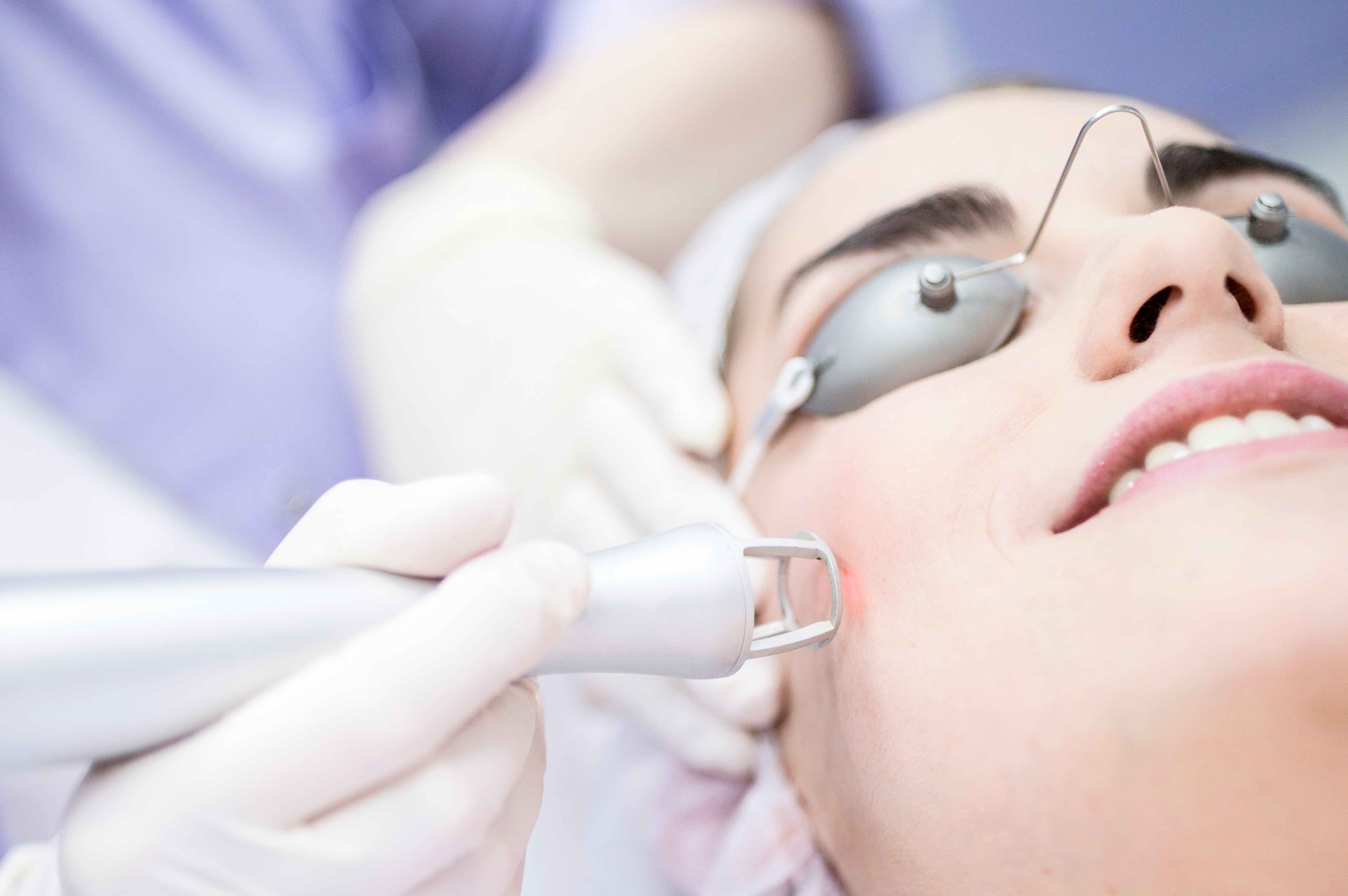You've seen it on social media, in K-dramas, and on the streets of Seoul: a standard of beauty that seems both effortlessly natural and impeccably refined. South Korea has firmly established itself as the global capital of aesthetic enhancement, attracting visitors from all over the world. But navigating this world of advanced procedures can be overwhelming. This guide is designed to be your trusted companion, demystifying the options and empowering you with the knowledge to make informed decisions for your aesthetic journey. We will move beyond the hype and provide a clear, professional roadmap to understanding the key procedures and, most importantly, how to choose the right clinic for you. 🗺️
Key Procedure Categories at a Plastic Clinic
A plastic clinic is a specialized medical facility dedicated to both aesthetic enhancement and reconstructive surgery. Understanding the main categories of procedures is the first step in clarifying your goals. Generally, treatments are grouped by the area of the body they address, each involving a range of surgical and non-surgical techniques.
💡 Core Categories of Plastic Surgery
Plastic clinics offer a wide spectrum of services, from subtle enhancements to significant transformations. These can be broadly classified into facial procedures, body contouring, and breast surgeries, along with a growing field of non-invasive treatments.
1. Facial Procedures
This is arguably the most popular category, especially in South Korea. These procedures aim to enhance facial harmony, create more defined features, or reverse the signs of aging.
- Eye Surgery (Blepharoplasty): Includes creating a double eyelid, correcting droopy eyelids (ptosis correction), and removing under-eye bags. The goal is to create brighter, more alert-looking eyes.
- Nose Surgery (Rhinoplasty): Focuses on altering the shape and size of the nose to improve facial balance. This can involve raising the bridge, refining the tip, or correcting a deviated septum.
- Facial Contouring: A set of procedures designed to create a slimmer, more V-shaped facial line. It includes cheekbone reduction, jaw reduction (V-line surgery), and chin augmentation (genioplasty).
- Anti-Aging: This category includes both surgical and non-surgical options like facelifts, thread lifts, fat grafting, and laser treatments to address wrinkles, sagging skin, and volume loss.
2. Body Procedures
Body contouring procedures are designed to sculpt the body by removing excess fat and skin, creating a more toned and proportionate physique.
- Liposuction: A popular procedure for removing stubborn fat deposits from areas like the abdomen, thighs, arms, and back that are resistant to diet and exercise.
- Tummy Tuck (Abdominoplasty): Removes excess skin and fat from the abdominal area and tightens the underlying muscles, often sought after significant weight loss or pregnancy.
- Hip-up Surgery: Enhances the shape and volume of the buttocks, typically through fat grafting (Brazilian Butt Lift) or implants.
3. Breast Procedures
These surgeries focus on altering the size, shape, and position of the breasts to meet the patient's aesthetic goals or for reconstructive purposes.
- Breast Augmentation: Increases breast size and enhances shape using saline or silicone implants, or through fat transfer.
- Breast Lift (Mastopexy): Raises and firms the breasts by removing excess skin and tightening the surrounding tissue to correct sagging.
- Breast Reduction: Reduces the size and weight of overly large breasts to alleviate physical discomfort and improve proportion.
TOP 5 Popular Procedures for Face, Body, and Breast
While trends can shift, certain procedures consistently remain popular due to their transformative and satisfying results. As of 2025, the demand for both subtle enhancements and significant changes continues to grow. Here’s a breakdown of the top procedures in each category. ✨
🏆 Top 5 Facial Procedures
| Rank | Procedure | Description |
|---|---|---|
| 1 | Rhinoplasty (Nose Surgery) | Refining the nose bridge and tip to create harmony with other facial features. Korean surgeons are known for creating natural-looking results. |
| 2 | Double Eyelid Surgery | Creating a crease in the upper eyelid to make the eyes appear larger and more defined. Both incisional and non-incisional methods are popular. |
| 3 | V-Line Surgery (Jaw & Chin) | Slimming the lower face by contouring the jaw and chin for a sharper, more elegant facial shape. |
| 4 | Facial Fat Grafting | Injecting the patient's own fat into areas like the forehead, cheeks, or smile lines to restore volume and create a youthful, "baby-face" look. |
| 5 | Thread Lifting | A minimally invasive procedure that uses dissolvable threads to lift and tighten sagging skin on the face and neck, stimulating collagen production. |
🏆 Top 5 Body Procedures
| Rank | Procedure | Description |
|---|---|---|
| 1 | Full Body Liposuction | Comprehensive fat removal from multiple areas (e.g., abdomen, thighs, arms) in a single session for a dramatic and balanced result. |
| 2 | Abdominoplasty (Tummy Tuck) | Creating a flat and toned abdomen by removing loose skin and tightening muscles, especially popular post-pregnancy. |
| 3 | Calf Reduction | Slimming the calf muscles for a more slender leg line, using either nerve blocking techniques or muscle resection. |
| 4 | Brazilian Butt Lift (BBL) | Using the patient's own fat, harvested via liposuction, to enhance the size and shape of the buttocks for a natural-looking lift. |
| 5 | Arm Lift (Brachioplasty) | Removing sagging skin from the upper arms ("bat wings") to create a more toned and youthful appearance. |
🏆 Top 5 Breast Procedures
| Rank | Procedure | Description |
|---|---|---|
| 1 | Breast Augmentation | The most common breast procedure, using implants (e.g., Motiva, Mentor) to increase volume and improve shape. |
| 2 | Breast Lift (Mastopexy) | Correcting sagging and restoring a more youthful breast position, often combined with augmentation for a "lift and fill" effect. |
| 3 | Breast Reduction | Alleviating physical and emotional discomfort from overly large breasts, while creating a more proportionate silhouette. |
| 4 | Nipple/Areola Correction | Aesthetic refinement of the nipple and areola, including size reduction or correction of inverted nipples. |
| 5 | Breast Implant Revision/Removal | Replacing old implants, correcting complications, or removing implants entirely for patients who desire a change. |
Advantages and Limitations of Non-Surgical Procedures
The rise of "lunchtime procedures" highlights a growing demand for cosmetic enhancements with minimal downtime. Non-surgical treatments like fillers, Botox, and laser therapies offer an excellent alternative for those not ready for surgery. However, it's crucial to understand both their benefits and their boundaries.
⚠️ Weighing the Pros and Cons
Non-surgical options are fantastic for maintenance and subtle changes, but they cannot replicate the dramatic, permanent results of surgery. Managing expectations is key to satisfaction.
👍 Advantages of Non-Surgical Procedures
- Minimal Downtime: Most patients can return to their daily activities almost immediately. Redness or slight swelling is typically short-lived.
- Lower Cost: The upfront cost is significantly less than surgical procedures, making them more accessible.
- Reduced Risk: They avoid the risks associated with general anesthesia and incisions, such as infection or scarring.
- Reversibility: Many fillers (like those based on hyaluronic acid) can be dissolved if the results are not satisfactory.
- Quick Results: The effects of treatments like fillers are often visible immediately, while Botox results appear within a few days.
👎 Limitations of Non-Surgical Procedures
- Temporary Results: The biggest drawback. Fillers last 6-18 months, and Botox lasts 3-6 months. This requires regular maintenance and long-term costs can add up.
- Limited Scope: They are best for addressing fine lines, minor volume loss, and skin texture. They cannot remove significant excess skin, alter bone structure, or make large-scale changes.
- Subtle Changes: While effective, the results are less dramatic than surgery. For example, a thread lift cannot achieve the same degree of lifting as a surgical facelift.
- Potential for Unnatural Look: Overuse or improper injection techniques can lead to an "overfilled" or unnatural appearance. Skill and artistry from the practitioner are paramount.
Essential Checklist Before Visiting a Plastic Clinic
Choosing a clinic is the most critical decision in your plastic surgery journey. Rushing this step can lead to unsatisfactory results or, worse, safety complications. This checklist will help you systematically evaluate potential clinics, especially as an international patient. 📋
💡 Your Pre-Consultation Homework
Thorough research is non-negotiable. Use this checklist to ensure the clinic meets the highest standards of safety, expertise, and patient care. Don't be afraid to ask direct questions during your consultation.
- ✅
Board-Certified Plastic Surgeon: Is the surgeon a member of the Korean Society of Plastic and Reconstructive Surgeons (KSPRS)? This certification ensures they have completed rigorous training and adhere to ethical standards.
- ✅
In-House Anesthesiologist: For any surgery requiring sedation or general anesthesia, a board-certified anesthesiologist must be present full-time. This is a critical safety measure.
- ✅
International Patient Support: Does the clinic have dedicated English-speaking coordinators or translators? Clear communication is essential from consultation to post-operative care.
- ✅
Comprehensive Pre-Operative Assessment: Does the clinic conduct thorough health checks (e.g., blood tests, EKG) before surgery to ensure you are a suitable candidate?
- ✅
Transparent Pricing: Is the price quote all-inclusive? It should cover the surgeon's fee, anesthesia, facility costs, and all necessary follow-up appointments and post-op care (like de-swelling treatments).
- ✅
Extensive Before-and-After Portfolio: Review their gallery of past patients. Do the results align with your aesthetic goals? Look for consistency and natural-looking outcomes for the specific procedure you want.
- ✅
Detailed Post-Operative Care Plan: What does the aftercare program include? Ask about follow-up schedules, de-swelling treatments, and who to contact in case of an emergency.
- ✅
Emergency Medical System: Does the clinic have proper emergency equipment (like a defibrillator and emergency power supply) and protocols in place?
How to Choose a Successful Plastic Clinic Through Reviews and Real Cases
In the digital age, reviews and patient testimonials are powerful tools. However, it's important to analyze them with a critical eye. A successful choice is based on a combination of authentic feedback and a careful review of a surgeon's actual work.
Reading Between the Lines of Online Reviews 🕵️♀️
Not all reviews are created equal. Here’s how to become a savvy researcher:
- Look for Detail, Not Just Stars: A 5-star review that says "Great!" is less helpful than a 4-star review that details the entire process: the consultation experience, the surgeon's communication style, the cleanliness of the facility, and the quality of the post-op care.
- Cross-Reference Platforms: Check reviews on multiple independent platforms (e.g., Google Maps, forums like PurseForum, Reddit's plastic surgery communities) in addition to the clinic's own website. This gives you a more balanced perspective.
- Be Wary of Extremes: Overly glowing, generic reviews and excessively negative rants can sometimes be misleading. Look for the balanced, thoughtful reviews in the middle, as they often provide the most realistic picture.
- Pay Attention to Staff Mentions: Reviews that mention helpful coordinators, caring nurses, and attentive aftercare staff are a strong indicator of a clinic's overall commitment to patient experience.
⚠️ A Note on "Shadow Doctors"
A major concern in the past was the issue of "shadow doctors" (a different, less experienced surgeon performing the operation after the patient is under anesthesia). Reputable clinics now have CCTV in operating rooms available for patient viewing upon request and emphasize a one-surgeon policy from consultation to surgery. Always confirm this policy.
Analyzing Real Patient Cases (Before & After Photos)
A surgeon's portfolio is their resume. It's the most direct evidence of their skill and aesthetic sense.
- Seek Consistency: Does the surgeon produce consistently high-quality results across many different patients for your desired procedure?
- Match Your Aesthetic: Every surgeon has a style. Some specialize in very natural, subtle changes, while others are known for more dramatic, "dolly" looks. Find a surgeon whose aesthetic vision matches your own.
- Look for Similar Cases: Try to find before photos of patients who have similar starting features to your own. This will give you a more realistic idea of the potential outcome.
- Check for High-Quality Photos: Professional clinics provide clear, well-lit photos from multiple angles (front, side, three-quarter). Be skeptical of low-quality, filtered, or single-angle photos.
Ultimately, a successful plastic surgery experience is built on a foundation of thorough research, realistic expectations, and choosing a qualified, ethical, and skilled surgeon. By using this guide, you are already taking the most important step towards a safe and satisfying transformation in Korea. 💖








